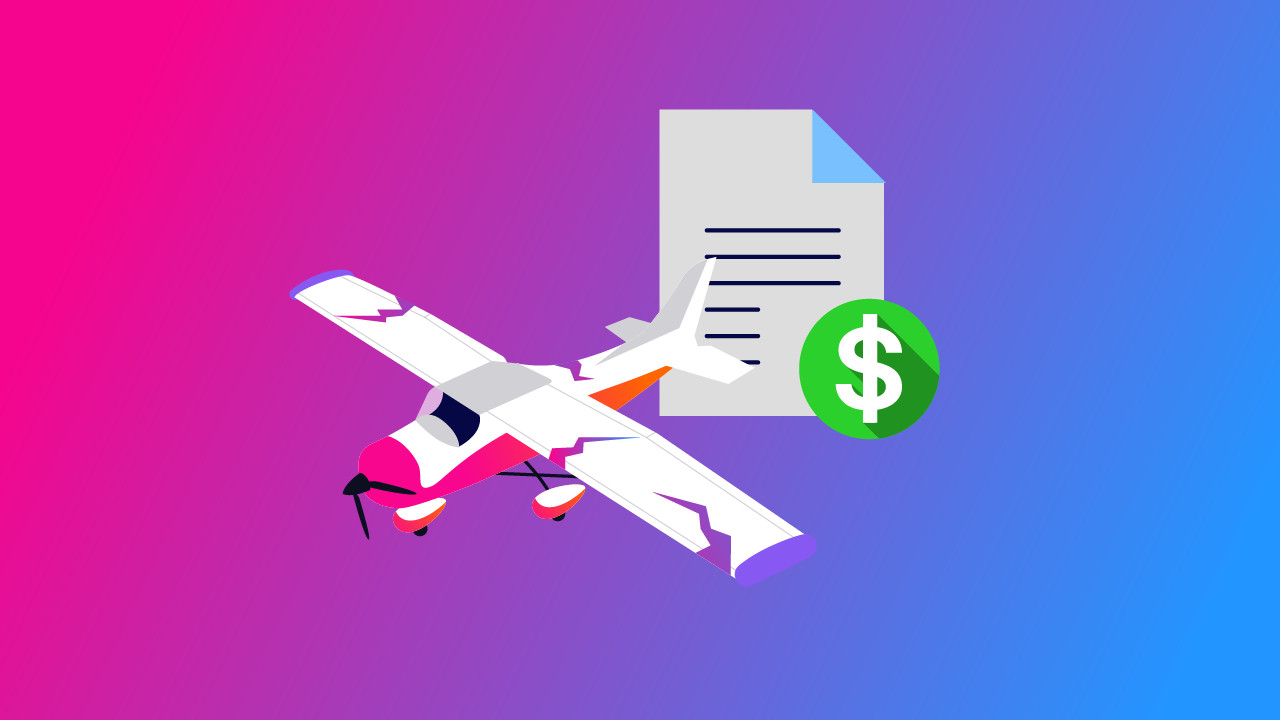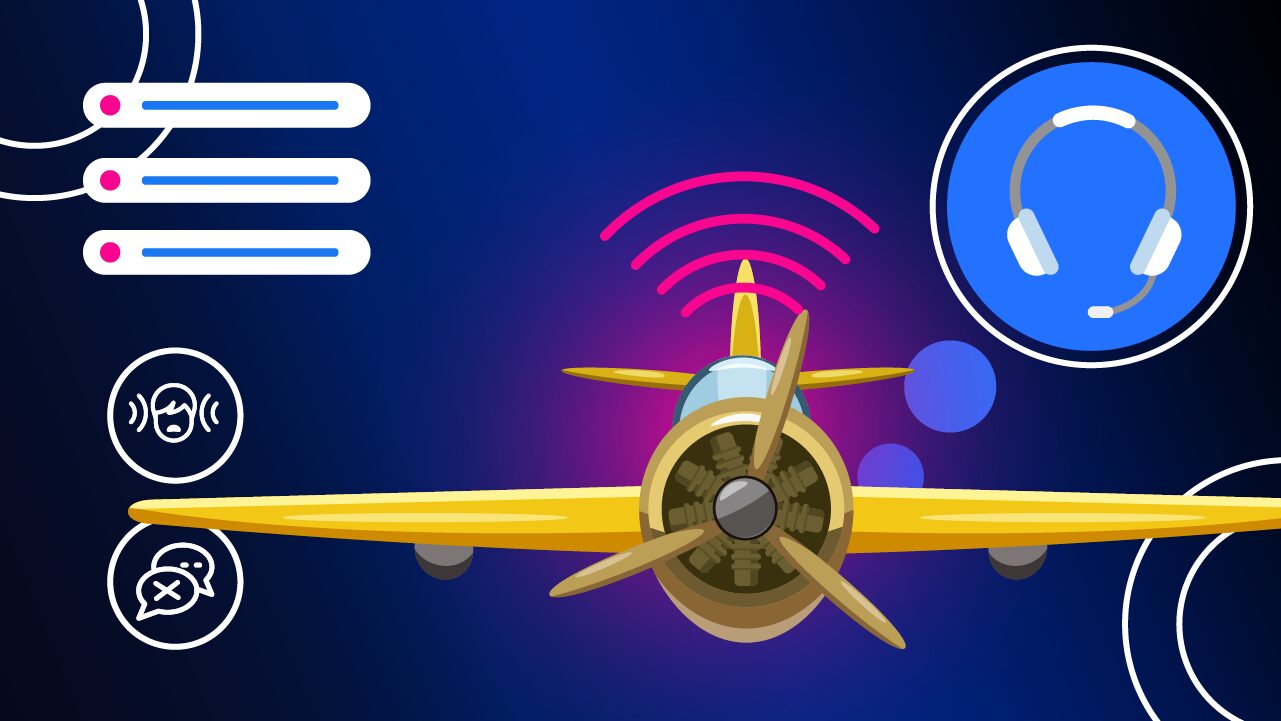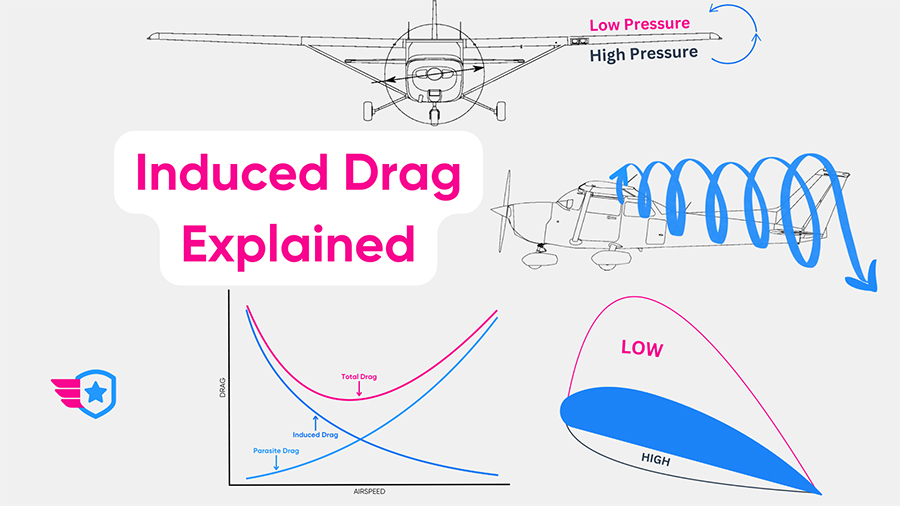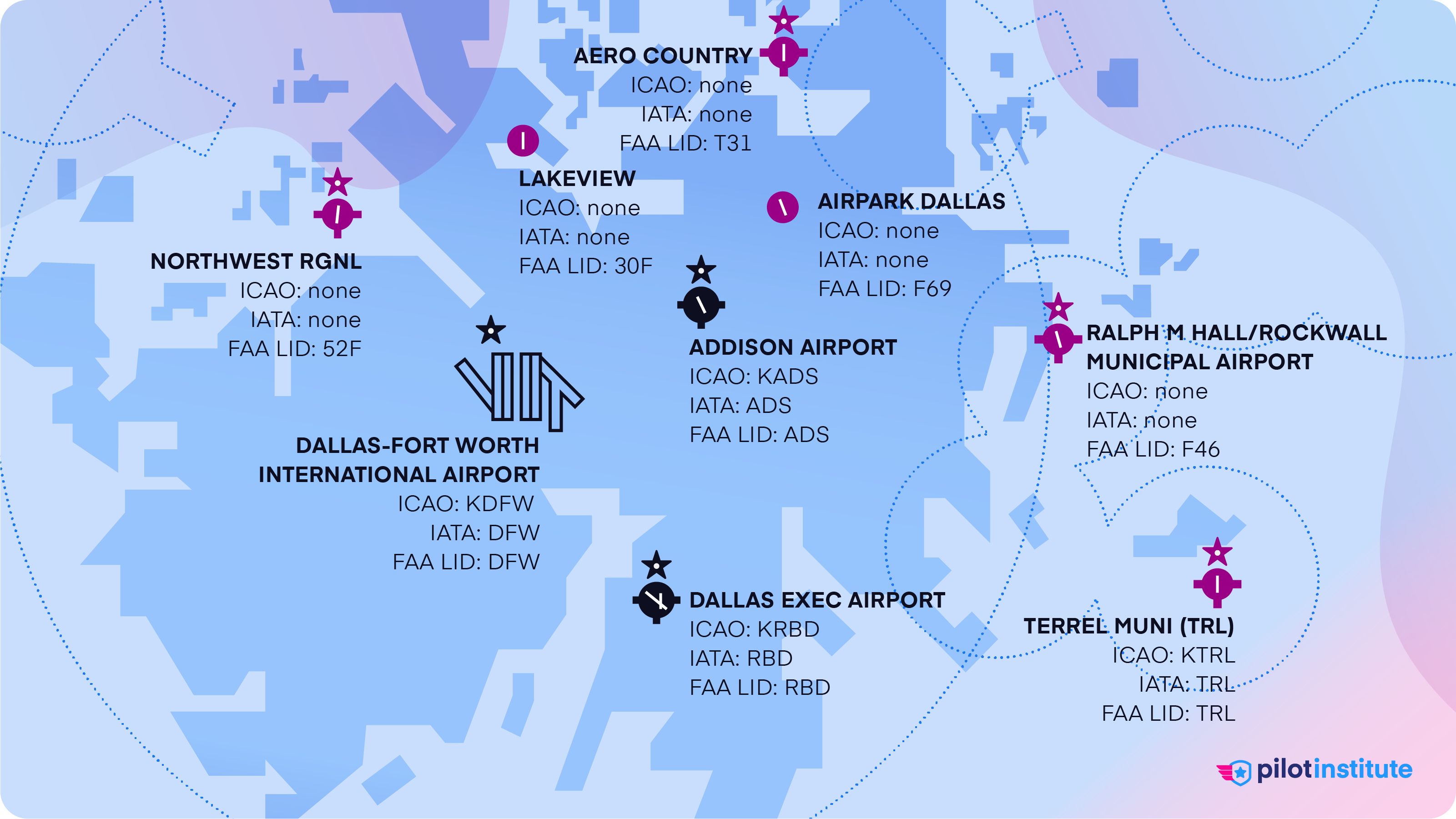-
Key Takeaways
-
What is Aircraft Renters Insurance?
-
What Does Aircraft Renters Insurance Cover?
- Legal Liability Coverage
- Physical Damage Coverage
- Add-Ons
-
Buying Aircraft Renters Insurance
- Where Can I Buy Aircraft Renters Insurance?
- How Much Does It Cost?
- How Long Does It Last?
- What Happens If I Need to Make a Claim?
-
Tips to Save Money
- Quotes
- Appropriate Coverage
- Building Experience
- Form a Relationship With Your Insurer
-
Conclusion
Renting an airplane is an exciting experience, but don’t forget one very important thing before you go—your protection.
It might seem like a good idea to rely on the owner’s or flight school’s insurance, but it usually doesn’t cover you if something goes wrong.
This is why aircraft renters insurance matters. Insurance because it pays for possible problems and costs, especially if you’re renting an airplane for a short trip or using one to learn how to fly.
Let’s learn why this coverage matters, what it includes, and how much you might need.
Key Takeaways
- Aircraft renters insurance is needed to cover liabilities that the owner’s policy doesn’t.
- Standard policies cover injury to others and property damage, but personal injury and aircraft damage need add-ons.
- Insurance costs vary with experience and coverage, typically between $60 and $500+ annually.
- Policies last 12 months and some policies need renewal to avoid lapses in coverage.
What is Aircraft Renters Insurance?
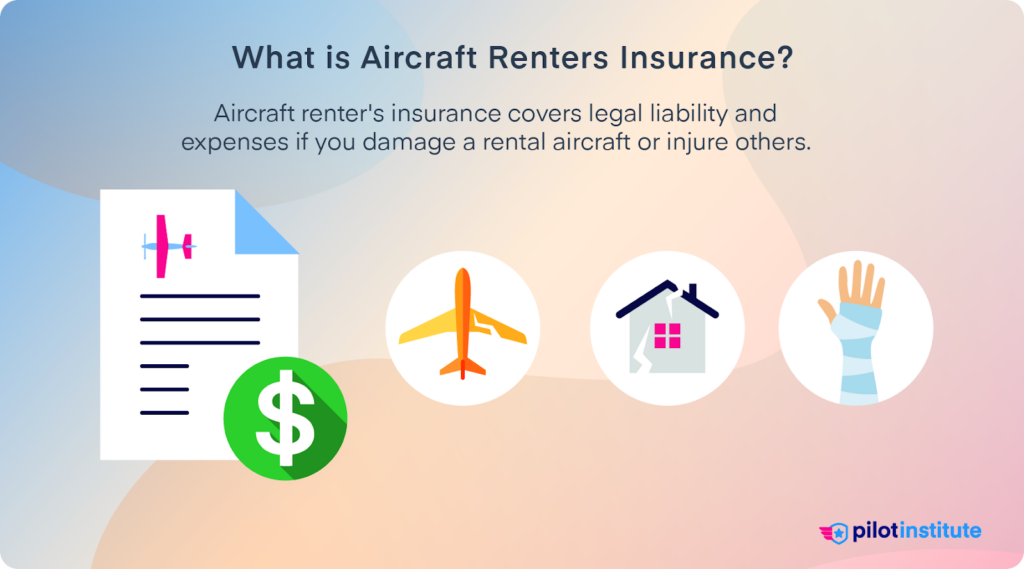
As you would have guessed, the insurance covers pilots renting out aircraft. More specifically, it covers any legal liability and expenses for an aircraft you do not own.
What does this mean exactly?
If you damage the rental aircraft or cause injury to others, the insurance will cover the associated costs.
Unfortunately, personal injury is not typically covered by these policies. You will need additional medical coverage added.
Aircraft renter’s insurance is different from the type that aircraft owners have. Coverage provided by owners, especially flight schools, is to protect their interests, not yours. This is why you need your own policy.
Without insurance, you could be responsible for any damages you incur and may face the risk of being sued.
What Does Aircraft Renters Insurance Cover?
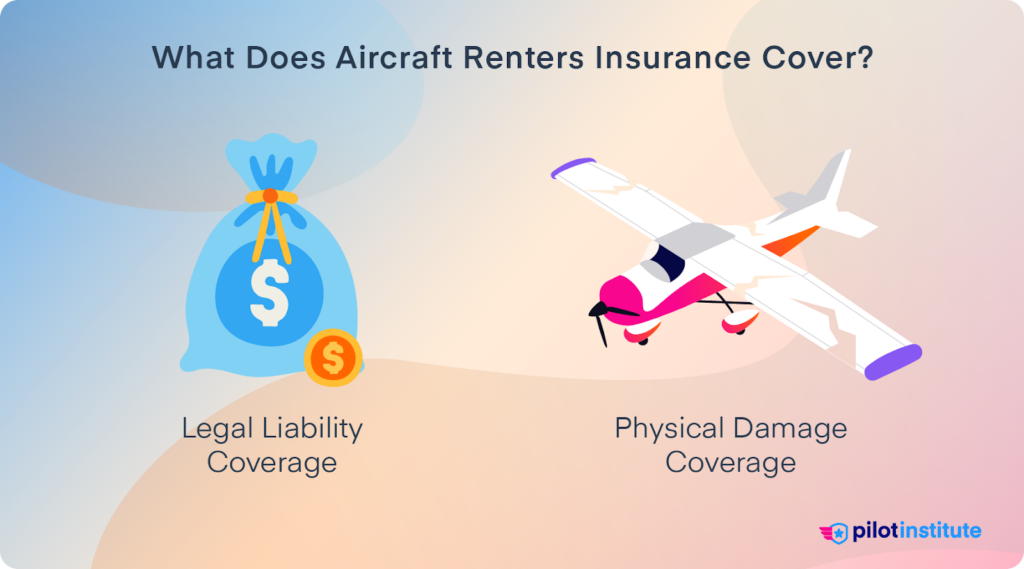
So we now know what renters insurance is, but what does it cover? There are two types of coverage you can get.
- Legal liability coverage
- Physical damage coverage
At the very least, you require legal liability coverage.
Now, let’s step through what is covered.
Legal Liability Coverage
Bodily Injury Liability
This coverage protects against costs if you cause injury to others during an accident. Be aware that it does not cover your own injuries.
To cover yourself, you will need to add medical payment coverage. This liability can include bystanders, but passengers are typically not covered unless you add passenger liability to your policy.
Some policies also help cover legal fees if you’re sued.
Property Damage Liability
This covers any costs incurred if you damage anyone’s property during an accident. For example, if you taxi into a hangar. The insurance company will pay for repairs, but only up to the policy limit.
Any additional costs beyond this limit will be your responsibility.
Physical Damage Coverage
Physical Damage for Non-owned Aircraft Coverage
Aircraft damage liability is exactly what it sounds like. It covers any damage sustained to the aircraft in a crash.
Keep in mind, that this is not automatically included. To receive this coverage you have to add it on top of the standard liability coverage.
If the cost to fix the aircraft exceeds its mutually agreed-upon value, it will be written off. This means the insurer will dispose of the wreckage and pay out the agreed-upon value of the aircraft.
Add-Ons
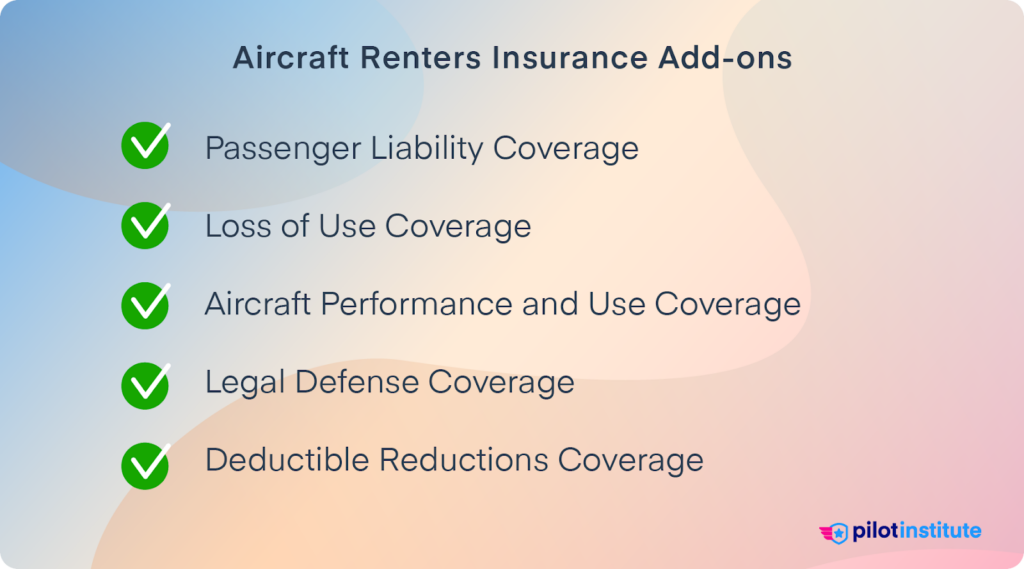
Like many other insurances, the insurer will present you with a list of add-ons. These add-ons will provide coverage for anything you think is necessary. They will cost extra.
The following are examples of what you can add to your policy.
Passenger Liability Coverage
With this add-on, you can pay extra to cover all passengers in the case of an accident. This means any medical bills accrued by passengers as a result of an accident will be covered.
Loss of Use Coverage
This covers the rental income lost while the aircraft is being repaired because of an accident you caused.
Legal Defense Coverage
While some policies cover basic legal costs, you may need more comprehensive coverage. This coverage means you don’t have to worry about the lengthy legal fees if you have to go to court.
Aircraft Performance and Use Coverage
Coverage may vary depending on what you use the aircraft for. Extra costs may be involved if you fly into grass strips or operate under a flying organization.
Deductible Reductions Coverage
Policies with lower deductibles typically have higher premiums. You can often choose a higher deductible to reduce your premium.
Deductibles can range up to $5000. If you are at fault, you should expect to cover it. This insurance covers you for that.
Buying Aircraft Renters Insurance
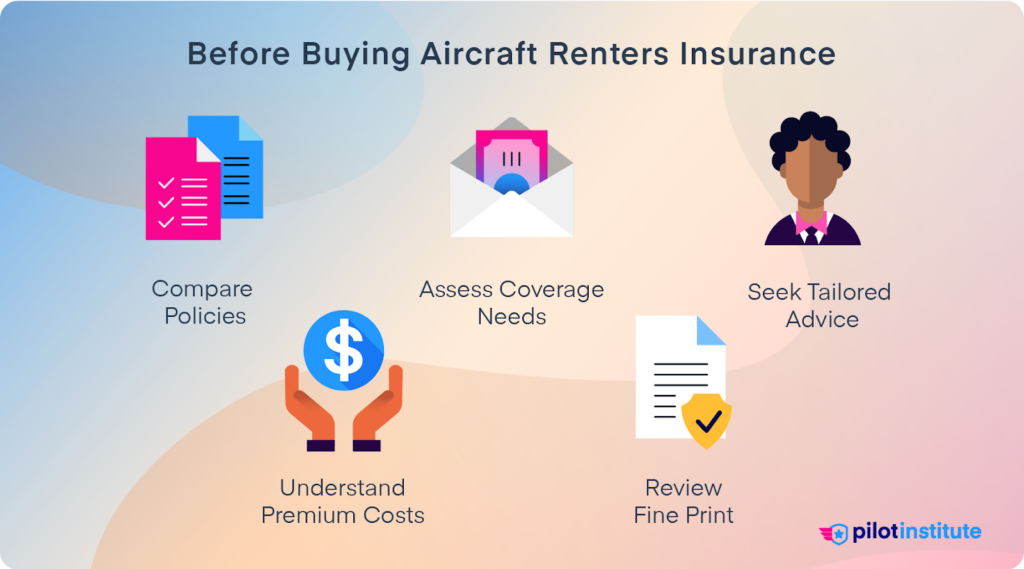
Buying insurance can be really intimidating, especially when there are so many options. So it’s important to know what to look out for.
Below, we’ve covered any questions you might have about buying insurance. We’ve also included some valuable tips for saving money on premiums.
Where Can I Buy Aircraft Renters Insurance?
There are companies all throughout the US that sell Aircraft Renters Insurance. It is a good idea to contact multiple companies to receive information about each policy.
The best way to contact these insurance companies is through their respected website. You can also call and talk to a representative who can help you find exactly what you’re looking for.
They will send you an example copy of the insurance policy. Read and compare each policy and choose one that best suits your needs.
Each policy will be different, so thoroughly research the policies and discuss your specific needs with the provider. Each policy can vary, make sure to read the fine print to know exactly what is covered.
Here are some trusted insurance providers to consider:
- Aircraft Owners and Pilots Association (AOPA)
AOPA is partnered with Assured Partners Aerospace and offers special rates to AOPA members. - SkyWatch
SkyWatch offers flexible aviation insurance with options for short-term coverage. - Avemco
Avemco provides renter’s insurance with strong liability and damage coverage options. - Starr Gate
Starr Gate is another well-known provider that offers aviation insurance with competitive rates and flexible coverage options.
Carefully compare these providers and bring up your unique flying needs with the insurer. Aim to get the best coverage possible for your price range.
How Much Does It Cost?
The cost of insurance for aircraft renters varies depending on multiple factors. This includes the type of aircraft, the level of coverage, and the pilot’s experience.
Another big factor is the number of flight hours a pilot has. Usually, the more flight hours you have, the lower your insurance premiums will be because experienced pilots are seen as a lower risk.
Here’s a breakdown of typical costs:
- Liability Coverage: The minimum requirement typically ranges from $60 to $100 annually for the average pilot. This covers bodily injury and property damage.
- Physical Damage Coverage: Adding this to your policy will increase the cost to around $175 to $400 per year.
- Student Pilots: Because of fewer flight hours, student pilots may pay more. This is usually between $300 and $500 annually.
Your total cost will also vary based on any additional add-ons you choose and the specific coverage limits you set. Always talk to your insurance provider about how your flight hours and specific needs will impact your premiums.
How Long Does It Last?
Standard aircraft renter’s insurance tends to last for twelve months. But depending on the policy, it will either automatically renew or require you to agree to and pay for a new policy.
Here’s an example, if you go with Assured Partners, a new policy is sent out to you every twelve months. You must agree and pay for it to maintain your coverage.
Stay on top of this renewal process. If your policy lapses and you fail to renew, you could be flying thinking that you’re covered when your coverage has already expired.
To avoid this, always check your renewal terms and make sure your policy is active before flying.
At renewal time, you might find the new policy cheaper because you’ve gained more flight experience. Once you get your pilot license you may no longer need extra coverage, such as student pilot coverage.
What Happens If I Need to Make a Claim?
Dealing with the aftermath of an accident is a nerve-wracking experience. The last thing you need is a complicated process for filing a claim when you’re still in recovery.
Fortunately, submitting a claim is a relatively easy task. If you get into an accident and have to file a claim, you must fill out your insurance company’s claim form.
You fill out all the relevant information regarding the accident on this form. Once complete, it is sent to the insurance company for them to review. A case manager will be assigned to your claim and will contact you regarding the progress of the claim.
Tips to Save Money
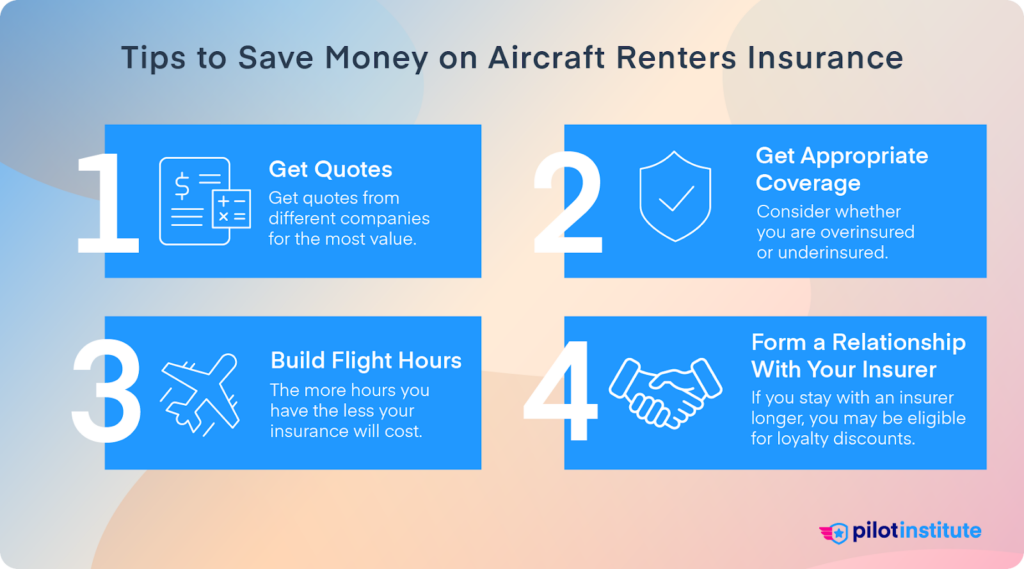
Like everything in aviation, insurance can also be costly. Saving as much as you can on your insurance policy means you can put more money into flying.
Quotes
Again, to get the best deal, you need to shop around. Get quotes from different companies to see which one gives the most value for money.
Appropriate Coverage
Consider whether you are overinsured or underinsured.
Remember, just because it’s the cheapest doesn’t mean it’s the best! You may be underinsured which means you may not be covered in certain circumstances, like severe accidents.
Comprehensive coverage might cost more in the short term, but it will save you thousands if you are ever in an accident.
The same goes for the opposite. Ensure you are not overinsured and paying for cover you don’t need!
If you’re in flight school, talk to the school about the cost of the aircraft used for training. This information will help you choose the right level of coverage.
This same advice applies to pilots in flying clubs, ask about the value of the aircraft to make sure your coverage matches the aircraft’s worth.
If you rely solely on the insurance offered by flight schools, clubs, or FBOs then you’re taking a risk. Their policies may prioritize the owner’s interests over yours. It’s always best to have your own policy to see that you’re fully protected.
Building Experience
Building up your experience and upgrading licenses will only help with insurance costs.
The more experienced you are, the less risky you are to insurance companies. This will make your ongoing insurance cheaper.
Form a Relationship With Your Insurer
If you stay with an insurer long-term, you may be eligible for loyalty discounts. Forming a relationship with your insurer will save you money in the long run. It may also benefit you if you ever need to make a claim.
Conclusion
Renting an aircraft without renters insurance is a gamble you simply don’t want to take. Even though it might seem like the owner’s insurance has you covered, the reality is that it probably doesn’t.
Without your own policy, you’re responsible for damages and any legal troubles that take place.
The good news is, coverage is affordable and can be tailored to your flying habits. Take a few minutes to talk to an insurance provider and get accurate figures based on your situation.
You’ll feel a lot better knowing you’re protected, no matter what happens up there.
